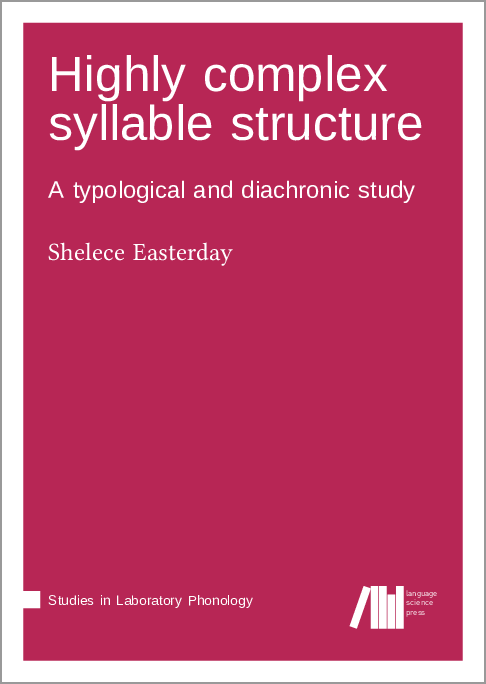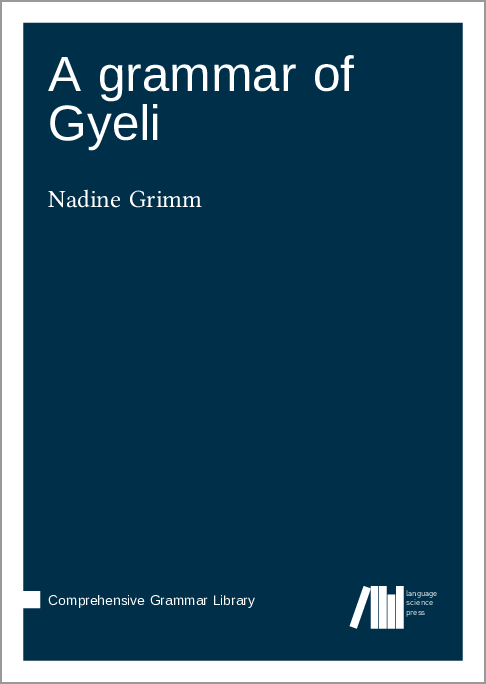Shelece Easterday and Nadine Grimm won the Greenberg Award and the Pāṇini Award, respectively, both awarded by the Association of Linguistic Typology at its 2019 meeting. Both have chosen to publish their books with Language Science Press. Let’s see what they have to say about their motivations and their experiences.
Hi Shelece and Nadine, and congratulations to your awards from the Association for Linguistic Typology. Could you tell us briefly what your research is about, and why you received the awards?
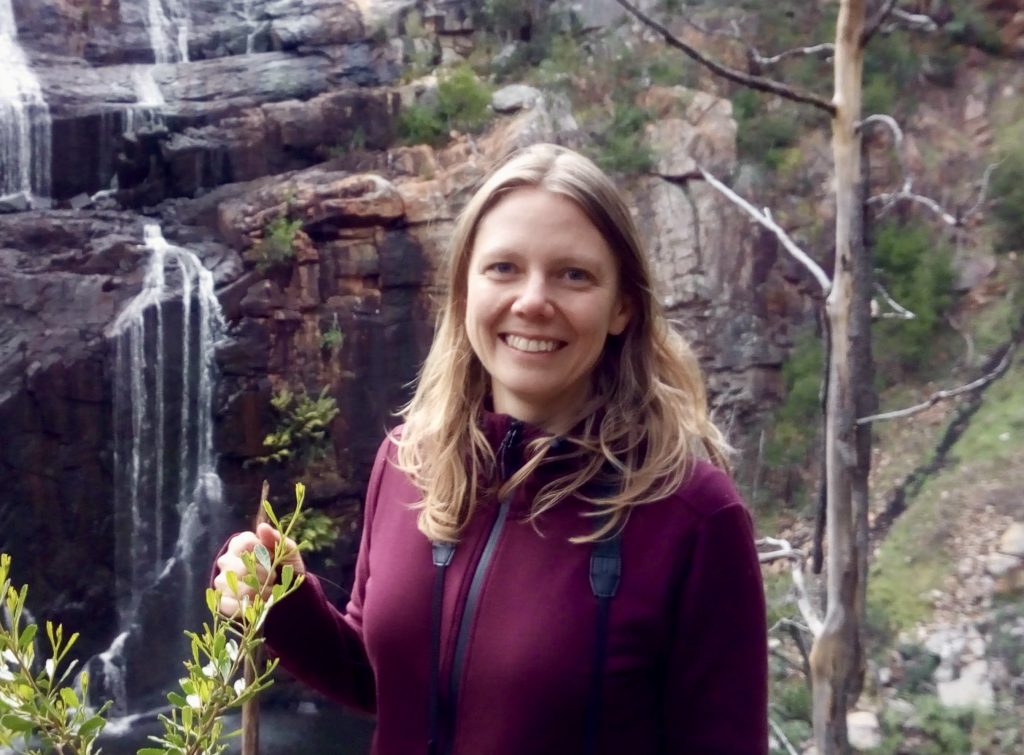
Shelece: My research is in phonological typology, and I am particularly interested in rare sound patterns and how these come about through processes of language change. My 2017 dissertation, for which I received the 2019 ALT Greenberg Award, examines the properties and emergence of highly complex syllable structure, a phonotactic pattern in which long strings of consonants may occur. My study involved both quantitative and qualitative analysis of the phonetic, phonological, and morphological properties of a diverse sample of 100 languages in order to determine the dynamic processes that might lead to a language developing highly complex syllable structure. I believe that it was the combination of this approach and the interesting topic (a pattern which is famous in the literature but often theoretically marginalized) which made the work attractive to the award committee.
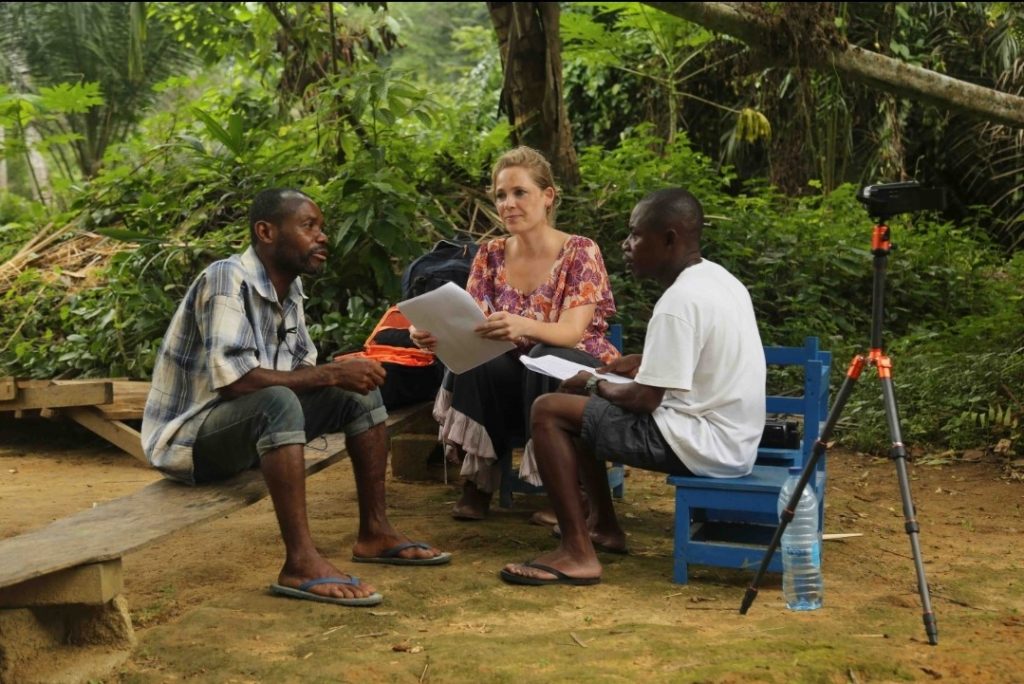
Nadine: I work on the Gyeli language of Cameroon and other Bantu languages. Based on empirical primary data that stems from fieldwork in the language community, I pay special attention to the interface between sound, meaning, and syntactic structure. In addition to grammar writing, I am especially interested in systems of grammatical tone as well as aspects of anthropological linguistics, for instance numeral systems or color terms.I received the Pāṇini Award 2019 for A grammar of Gyeli, an endangered northwestern Bantu language of Cameroon spoken by “Pygmy” hunter-gatherers. The award committee praised the originality of the grammatical analysis, which is solidly based on empirical evidence from a diverse range of natural language data, the fact that the grammar is thoroughly embedded in and explicitly connected to wider scholarship in both Bantu linguistics and typology, as well as the accessible, reader-friendly form-to-function style in the grammar’s organization.I believe that another bonus of the grammar is its foundation in a documentary approach. Nineteen months of fieldwork within a DoBeS (Documentation of Endangered Languages) project provided a rich text corpus covering various genres that informed my description and enabled me to add ethnographic and sociolinguistic information.
Your awards were for your dissertations, which were then turned into LangSci books. When did you decide that you would go for LangSci as a publisher, and what were the reasons behind this? Are there any other outlets you had considered?
Shelece: I knew that given the scale of the study, the dissertation had to be published as a book rather than a series of articles. Two members of my dissertation committee, Ioana Chitoran and my advisor Caroline Smith, suggested the LangSci series Studies in Laboratory Phonology as an appropriate venue for this. Although my study was a typological survey, I interpreted many of the results within a Laboratory Phonology (and specifically Articulatory Phonology) framework, so the series turned out to be a good fit. The proposal was received with enthusiasm by the series editors, so I did not pursue any other outlets.
Nadine: I decided to go for LangSci as a publisher relatively late, after having received the Pāṇini Award. I had thought for a long time that I would go with the Mouton Grammar Library, which seemed to be prestigious and the default outlet for reference grammars. However, I am really happy that my book came out with LangSci, for many reasons. The most important consideration for me is open access, which is an ethical question. In fact, I had many discussions with Mandana Seyfeddinipur, the Director of the Endangered Language Documentation Programme (ELDP), about this. She got me thinking about the issues of traditional outlets for the speech community and the academic community in many non-Western countries. It doesn’t seem fair to me that the speakers of Gyeli would have to pay for accessing the grammar about their own language that they helped me compile over so many years. It doesn’t seem fair that African colleagues are systematically excluded from the scientific discourse, even on the languages of their own country, because their universities cannot provide sufficient access to the literature. With LangSci, access is much more equitable and distribution so much easier.
Shelece, your dissertation was written in MS Word, while Nadine’s was written in LaTeX. What were your experiences regarding the transformation of your theses into “real” books? Were there any surprises or hiccups?
Shelece: It was a very positive experience. I am not highly literate in LaTeX, but Felix Kopecky and Sebastian Nordhoff were wonderfully helpful in assisting with issues large and small, and were always quick to answer my questions. The community proofreading process was also a smooth one. I suppose the most surprising issue was that formatting is much more rigid for “real” books than for dissertation manuscripts. We had to come up with some creative abbreviations and reorganization of the many large tables in the book in order to adhere to formatting requirements, a process which Felix and I went back and forth on frequently.
Nadine: The requirement for typesetting in LaTeX was one other thing that I really appreciate about LangSci. I would not have wanted to publish with an outlet that would have required me to transform my dissertation into Word. I knew that I would have to do quite some cleaning up in my LaTeX files; many of my packages that I had accumulated and used over the years had become obsolete. However, I was in fact positively surprised what a great experience I had with the transformation into a “real” book. Sebastian Nordhoff and Felix Kopecky made it really easy for me. They were extremely responsive, I always heard back within a few hours and often, we were working together at the same time, communicating in the Overleaf chat. Felix created new glyphs for the Libertinus fonts because, initially, there was some mis-alignment with nasal and tonal diactritics. Sebastian fixed so many tables and re-did my maps, they just made it look so much better and took a ton of work off my shoulders.
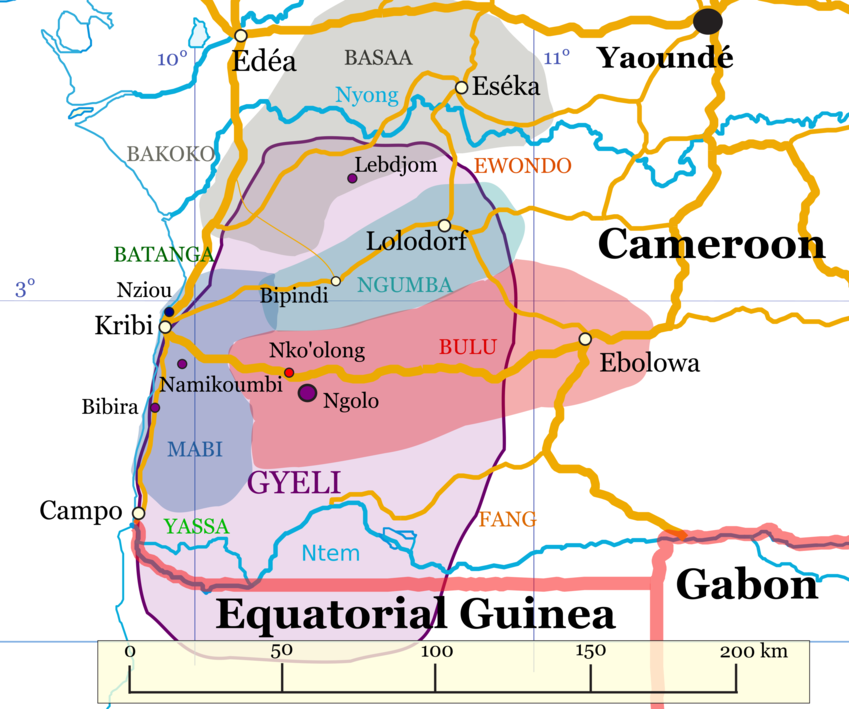
Original map 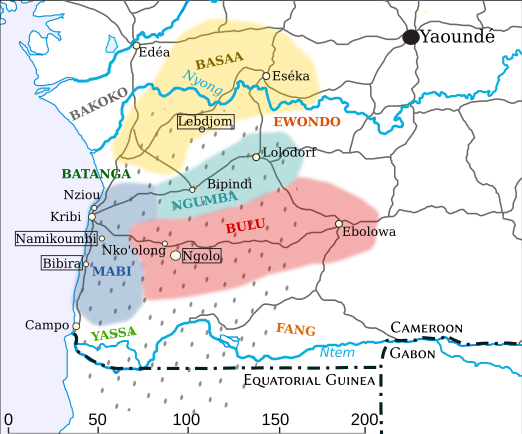
Reworked map
Shelece’s book “Highly complex syllable structure” was published in November 2019 and has gathered more than 3,000 downloads as of today, Nadine’s book was only published last month and has about 200 downloads. Could you tell us something about your expectations regarding your readership?
Shelece: Because of the nature of the study, I expected that the book would be useful as a reference work for those doing related research. My hope in publishing with LangSci was that the open access format would allow for the data and findings to be widely available and easy to access for all, regardless of location, institutional affiliation, and employment or registration status. I am happy to see that’s been the case.
Nadine: My hope with an open access publisher was that my work would reach a larger audience. I was surprised, however, about the high number of downloads in such a short time. I hope that the grammar will be useful for those interested in related and neighboring languages, Bantu languages in general, and diverse typological aspects that Gyeli might provide some data for. Just like Shelece, I appreciate the wide availabilty and ease of access with LangSci so that scholars and community members of all backgrounds can use the Gyeli grammar.
You defended your dissertations at U New Mexico and Humboldt University, respectively. How has your career evolved ever since?
Shelece: Shortly after defending my dissertation at University of New Mexico, I was awarded an ASLAN grant to conduct postdoctoral research at Laboratoire Dynamique du Langage (DDL; CNRS & Université Lyon 2) in Lyon, France. That postdoc, which lasted through early 2020, was a great experience and expanded my research network considerably. Following that, I had a brief postdoctoral research appointment with the Department of Comparative Language Science at University of Zürich, which unfortunately had to be conducted remotely due to the pandemic. In the summer of 2020 I moved across the world again to start a tenure-track position as an Assistant Professor in the Department of Linguistics at University of Hawai’i Mānoa, which I am enjoying. I feel incredibly fortunate to have had all of these opportunities in such a short period of time.
Nadine: Even before my dissertation defense I started a lecturer position in the Linguistics Department at the University of Rochester, which then turned into an adjunct position and then, in 2019, into a tenure-track position. I feel very supported by my department, embracing my academic specialization and allowing me to set up a graduate program in Language Documentation and Description. I also feel very lucky that my husband and I have positions in the same department. Rochester is a great place.
Any take-home messages you would like to share?
Shelece: I recommend LangSci as a publication venue to anyone wanting to publish high-quality linguistic research, but its open-access model and publication process are particularly beneficial to early career researchers who are looking to find a wide audience for their work. Thanks to Sebastian and the entire LangSci team for building and maintaining this important resource!
Nadine: I entirely agree with Shelece. I also want to emphasize my appreciation for the reviewing process. Martin Haspelmath was an excellent series editor who gave me very valuable and constructive feedback as well as the other nine anonymous reviewers. The voluntary proofreaders in the community proofreading process also contributed to a high-quality result. In summary, I am absolutely happy with the whole experience.

